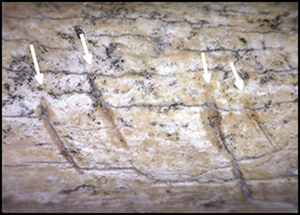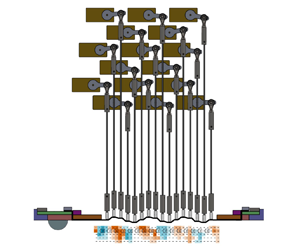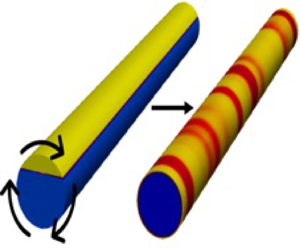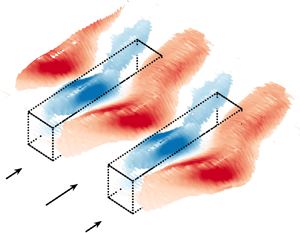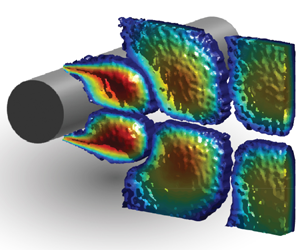Refine listing
Actions for selected content:
1417116 results in Open Access
Developing the WE BEAT Well-Being Education Programme to foster resilience and build connection in paediatric heart disease
-
- Journal:
- Cardiology in the Young / Volume 34 / Issue 8 / August 2024
- Published online by Cambridge University Press:
- 16 April 2024, pp. 1701-1707
-
- Article
-
- You have access
- Open access
- HTML
- Export citation
Intersectional Victims as Agents of Change in International Human Rights-Based Climate Litigation
-
- Journal:
- Transnational Environmental Law / Volume 13 / Issue 3 / November 2024
- Published online by Cambridge University Press:
- 16 April 2024, pp. 610-635
-
- Article
-
- You have access
- Open access
- HTML
- Export citation
With Haraway and Beyond: Towards an Ecofeminist and Contextual Vegan Ethico-Politics
-
- Article
-
- You have access
- Open access
- HTML
- Export citation
Incentivizing Investors for a Greener Economy
-
- Journal:
- Journal of Financial and Quantitative Analysis / Volume 60 / Issue 1 / February 2025
- Published online by Cambridge University Press:
- 16 April 2024, pp. 406-446
- Print publication:
- February 2025
-
- Article
-
- You have access
- Open access
- Export citation
Caches, Memory, and Ritual at the Maya City of Cival
-
- Journal:
- Latin American Antiquity / Volume 35 / Issue 2 / June 2024
- Published online by Cambridge University Press:
- 16 April 2024, pp. 294-312
- Print publication:
- June 2024
-
- Article
-
- You have access
- Open access
- HTML
- Export citation
Nasal obstruction symptom evaluation score outcomes in patients awaiting septoplasty at a tertiary ENT centre
-
- Journal:
- The Journal of Laryngology & Otology / Volume 138 / Issue 9 / September 2024
- Published online by Cambridge University Press:
- 16 April 2024, pp. 902-905
- Print publication:
- September 2024
-
- Article
- Export citation
PAUL BELONICK, RESTRAINT, CONFLICT, AND THE FALL OF THE ROMAN REPUBLIC. New York, NY: Oxford University Press, 2023. Pp. ix + 228. isbn 9780197662663. £54.00.
-
- Journal:
- The Journal of Roman Studies / Volume 114 / November 2024
- Published online by Cambridge University Press:
- 16 April 2024, pp. 221-222
- Print publication:
- November 2024
-
- Article
- Export citation
A Deposit of Silver Aquillas from the Site of Purun Llacta de Soloco, Amazonas, Peru
-
- Journal:
- Latin American Antiquity / Volume 35 / Issue 4 / December 2024
- Published online by Cambridge University Press:
- 16 April 2024, pp. 1045-1051
- Print publication:
- December 2024
-
- Article
-
- You have access
- Open access
- HTML
- Export citation
Austria and the Czech Republic as Immigration Countries: Transnational Labor Migration in Historical Comparison
-
- Journal:
- Austrian History Yearbook / Volume 55 / May 2024
- Published online by Cambridge University Press:
- 16 April 2024, pp. 343-349
- Print publication:
- May 2024
-
- Article
-
- You have access
- Open access
- HTML
- Export citation
Investigation of ambient-pressure absorbance characteristics of cartilage-grafted tympanic membranes
-
- Journal:
- The Journal of Laryngology & Otology / Volume 138 / Issue 9 / September 2024
- Published online by Cambridge University Press:
- 16 April 2024, pp. 893-901
- Print publication:
- September 2024
-
- Article
- Export citation
Reactive control of velocity fluctuations using an active deformable surface and real-time PIV
-
- Journal:
- Journal of Fluid Mechanics / Volume 985 / 25 April 2024
- Published online by Cambridge University Press:
- 16 April 2024, A9
-
- Article
-
- You have access
- Open access
- HTML
- Export citation
Aerodynamic characteristics of different configurations of mechanically deployable aerodynamic decelerator in subsonic region
-
- Journal:
- The Aeronautical Journal / Volume 128 / Issue 1327 / September 2024
- Published online by Cambridge University Press:
- 16 April 2024, pp. 2092-2104
-
- Article
- Export citation
Enhanced recovery caused by nonlinear dynamics in the wake of a floating offshore wind turbine
-
- Journal:
- Journal of Fluid Mechanics / Volume 984 / 10 April 2024
- Published online by Cambridge University Press:
- 16 April 2024, A66
-
- Article
-
- You have access
- Open access
- HTML
- Export citation
Distribution of Avicennia spp. in the Andaman and Nicobar Islands with special reference to new distributional reports and post-tsunami colonization patterns
-
- Journal:
- Journal of the Marine Biological Association of the United Kingdom / Volume 104 / 2024
- Published online by Cambridge University Press:
- 16 April 2024, e43
-
- Article
-
- You have access
- HTML
- Export citation
COUNTING IN UNCOUNTABLY CATEGORICAL PSEUDOFINITE STRUCTURES
- Part of
-
- Journal:
- The Journal of Symbolic Logic / Volume 89 / Issue 4 / December 2024
- Published online by Cambridge University Press:
- 16 April 2024, pp. 1455-1475
- Print publication:
- December 2024
-
- Article
-
- You have access
- Open access
- HTML
- Export citation
Mechanism for axial pattern formation of concentrated suspension in a horizontal rotating cylinder
-
- Journal:
- Journal of Fluid Mechanics / Volume 985 / 25 April 2024
- Published online by Cambridge University Press:
- 16 April 2024, A8
-
- Article
-
- You have access
- Open access
- HTML
- Export citation
Langmuir turbulence in suspended kelp farms
-
- Journal:
- Journal of Fluid Mechanics / Volume 985 / 25 April 2024
- Published online by Cambridge University Press:
- 16 April 2024, A11
-
- Article
-
- You have access
- Open access
- HTML
- Export citation
“To Use This Word … Would Be Absurd”: How the Brainwashing Label Threatened and Enabled the Troubled-Teen Industry
-
- Journal:
- Journal of American Studies / Volume 58 / Issue 3 / July 2024
- Published online by Cambridge University Press:
- 16 April 2024, pp. 357-389
- Print publication:
- July 2024
-
- Article
-
- You have access
- Open access
- HTML
- Export citation
Cylinder flow and noise control by active base blowing
-
- Journal:
- Journal of Fluid Mechanics / Volume 985 / 25 April 2024
- Published online by Cambridge University Press:
- 16 April 2024, A10
-
- Article
- Export citation
